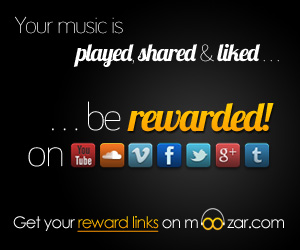By Carolyn Heneghan
If you’re a classical music lover looking for new ways to be immersed in the works of your favorite composers, The Orchestra app provides a unique and enthralling experience that dives into the heart of orchestral performances. Featuring the London Philharmonia Orchestra, this app from Touch Press envelops you with the sounds, visuals, and commentary that encircle these rich and complex pieces of music.
With the aid of technology like the iPad and interactive apps, a whole new world of classical music is emerging. The pieces themselves, their scores, video recordings, commentary from musicians, and conductor Esa-Pekka Salonen, and an interactive guide to the orchestra’s instruments synchronize and synthesize in one extraordinary app. This application is so jam-packed with information that you can spend hours studying any one of the eight included pieces.
Whether you have a new, passing, or die-hard passion for the symphonic music, this app has a wealth of information to deepen your level of interest. Whether you like music trivia, watching musicians in action, or following along with the music, The Orchestra has a little bit of everything to keep you thoroughly entertained.
Multimedia presentation – Audio + Video
From the home screen you are instantly introduced to bits of the featured works and the stunning photography and videography that bring this app to life. You can then choose any one of the eight works available on the app:
- Haydn: Symphony No. 6 (1761)
- Beethoven: Symphony No. 5 (1808)
- Berlioz: Symphonie fantastique (1830)
- Debussy: Prélude à l’après midi d’un faune (1894)
- Mahler: Symphony No. 6 (1906)
- Stravinsky: The Firebird (1910)
- Lutoslawski: Concerto for Orchestra (1954)
- Salonen: Violin Concerto (2009)
While the music is playing, there are three screens of different video shots capturing the orchestra performing the piece in sync with the music. The videos are shot from multiple angles and feature both the conductor and the musicians in a series of group shots and close-ups.
In the Debussy piece, for example, during a flute soli, one angle will feature the soloists, another the conductor, and the other different clips of various groups and single musicians as they play. The videos serve to highlight both individual and sectional performances, giving the user a bird’s eye view into the orchestral action behind the music—a perspective not often experienced even at live concerts.
Follow Along with the Score
The app also allows you to follow along with the piece’s score in several different ways. As the orchestra performs, the rolling score for the piece will be displayed along the bottom of the screen. You can choose between seeing the full score with all the instruments at once or the curated score, which only includes the instruments playing in that particular section of the song.
You can also toggle between seeing the notes in a larger or smaller form; this larger format could potentially help musicians if they wanted to learn how to play the piece along with the orchestra. Another mode is a simpler version that looks something like Garage band and other similar programs and shows the music as elongated bars rather than specific notes.
In addition to the scrolling scores, there is also a beatmap at the top of the screen that displays the different instrument sections or the orchestra as multicolored dots. As they perform the song, the particular instruments that are playing will light up in time with the beats of the music to provide insight into how the orchestra and the music work together.
Song Exploration and Extra Tidbits from the Commentaries
The Orchestra also includes a comprehensive log of commentaries for each of the app’s eight songs. You can choose between conductor Esa-Pekka Salonen’s thoughts and the musicians’, and you can also decide between hearing the commentaries aloud or reading them as subtitles onscreen as the song plays. You can also stop the music entirely to hear more commentary alone by selecting the speaker’s picture.
 These commentaries provide an even more in-depth look into the piece’s music performance. For example, in Salonen’s commentary for Debussy’s “Prelude à Après-midi d’un Faune,” he says, “It is an aimless, quivering melody, going nowhere in particular. The harmony is ambiguous. Themes in this short score are not developed. Instruments are allowed a mildly shocking degree of freedom.” He then touches on the history of the piece and its premiere, during which he postures that “modern music could be said to have been born.”
These commentaries provide an even more in-depth look into the piece’s music performance. For example, in Salonen’s commentary for Debussy’s “Prelude à Après-midi d’un Faune,” he says, “It is an aimless, quivering melody, going nowhere in particular. The harmony is ambiguous. Themes in this short score are not developed. Instruments are allowed a mildly shocking degree of freedom.” He then touches on the history of the piece and its premiere, during which he postures that “modern music could be said to have been born.”
The commentaries themselves often mimic the richness and beauty of the music itself. The immersion and understanding of these pieces of music due to each element of song interaction make this app essential for classical music lovers and purely addictive for music lovers of all stripes. You could spend hours exploring any one piece and learning more than you ever thought possible about the physical, lyrical, and historical efforts that go into creating these masterpieces.
And Finally, Hear and Play the Instruments Yourself
From the homepage of the app, instead of selecting a specific work, you can select the instrument photo to bring up an entirely different side of the app. This will bring up pictures of all the instruments in the Philharmonia, which you can then click on for more information. There will be an essay accompanied by a “Did You Know?” factoid. You can double-click the instrument photo itself to take a closer look.
The Showcase section provides clips of the songs included in the app that feature that particular instrument. You can also see information about the instrument’s note range, frequency range, and size.
One of the most interesting parts of these instrument pages is the commentary from the musicians themselves about what it’s like to play their instrument of choice. And best of all, you can play the instrument itself either with a keyboard or button with the photo of, say, a particular cymbal. Strike the button or keyboard key, and you’ll hear the instrument play that note or sound.
With such a wealth of information, this app is perfect for all music lovers, especially fans of classical music and those yearning to learn more. And there’s more music to come with future updates. For example, soon five classic and complete Beethoven performances will be available for comparison.
The app is available for download for iPad (2nd-4th generation and mini) from the iTunes store for $13.99.


















Comments are closed.